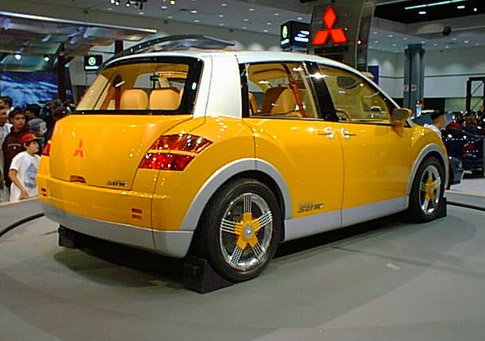 Advance is the vision of a family vehicle, handy both in the city, and beyond. Therefore, a hybrid powertrain was chosen, consisting of a GDI engine with displacement 1,5 dm3 and power 77 kW and the auxiliary or replacement, if necessary, electric machine with reversible operation (moc 12 kW). The energy recovery system allows the set of forty lithium-ion batteries to be recharged while braking or driving downhill. The torque is transmitted to the wheels via an electronically controlled system, continuously variable CVT with two operating modes (Normal i Power). Average fuel consumption is 3,6 dm3 / 100 km.
Advance is the vision of a family vehicle, handy both in the city, and beyond. Therefore, a hybrid powertrain was chosen, consisting of a GDI engine with displacement 1,5 dm3 and power 77 kW and the auxiliary or replacement, if necessary, electric machine with reversible operation (moc 12 kW). The energy recovery system allows the set of forty lithium-ion batteries to be recharged while braking or driving downhill. The torque is transmitted to the wheels via an electronically controlled system, continuously variable CVT with two operating modes (Normal i Power). Average fuel consumption is 3,6 dm3 / 100 km.
The form of the vehicle's exterior follows the concept of functionality and versatility of the interior. Advance five-door on the wheelbase 2575 mm and length 3880 mm holds five people, which, thanks to the abandonment of the central pillar and the placement of hinges on the outer pillars, offers easier access to the low-running cabin, flat floor. Rear trailing arms, The torsion bars and shock absorbers are located beneath its surface. Foldable, rotated, removable and sliding seats on longitudinal guides allow for almost any arrangement of the passenger and luggage space. The front end of the Advance has also been designed to help pedestrians avoid greater injury in the event of a collision by incorporating an easily deformable engine hood and energy-absorbing bumpers. In the interests of active safety, a radar distance sensor from the vehicle in front is provided, cameras to help maintain the correct course of motion, lane change and reversing, as well as a navigation system with traffic information (zatory, detours).
Low fuel consumption, and, consequently, also a low level of emissions of toxic compounds into the atmosphere, was also obtained thanks to the reduction of mass and resistance to motion. Advance has an engine cover, doors and suspension elements made of aluminum alloys, and for the production of its buffers, Plastics were used for the fenders and parts of the shell. Not only the body silhouette has been aerodynamically refined (to obtain the coefficient cx = 0.28 we used e.g.. hidden in the contour of the door handle), but also the undercarriage mechanisms were covered. A two-stage deflector is mounted under the rear axle, reducing the resistance of the air stream flowing under the car. The degree of the air intake opening to the engine compartment is variable and depends on the instantaneous temperature of the coolant. Tires with minimized rolling resistance are resistant to damage, which made it possible to eliminate the spare wheel. It is suitable for reuse 90% parts having a mass 980 kg of the car.
Mitsubishi SUW Advance resembles a driving test site, and mastering the serial production of some of the solutions used in it would require overcoming many problems of a technological nature.
